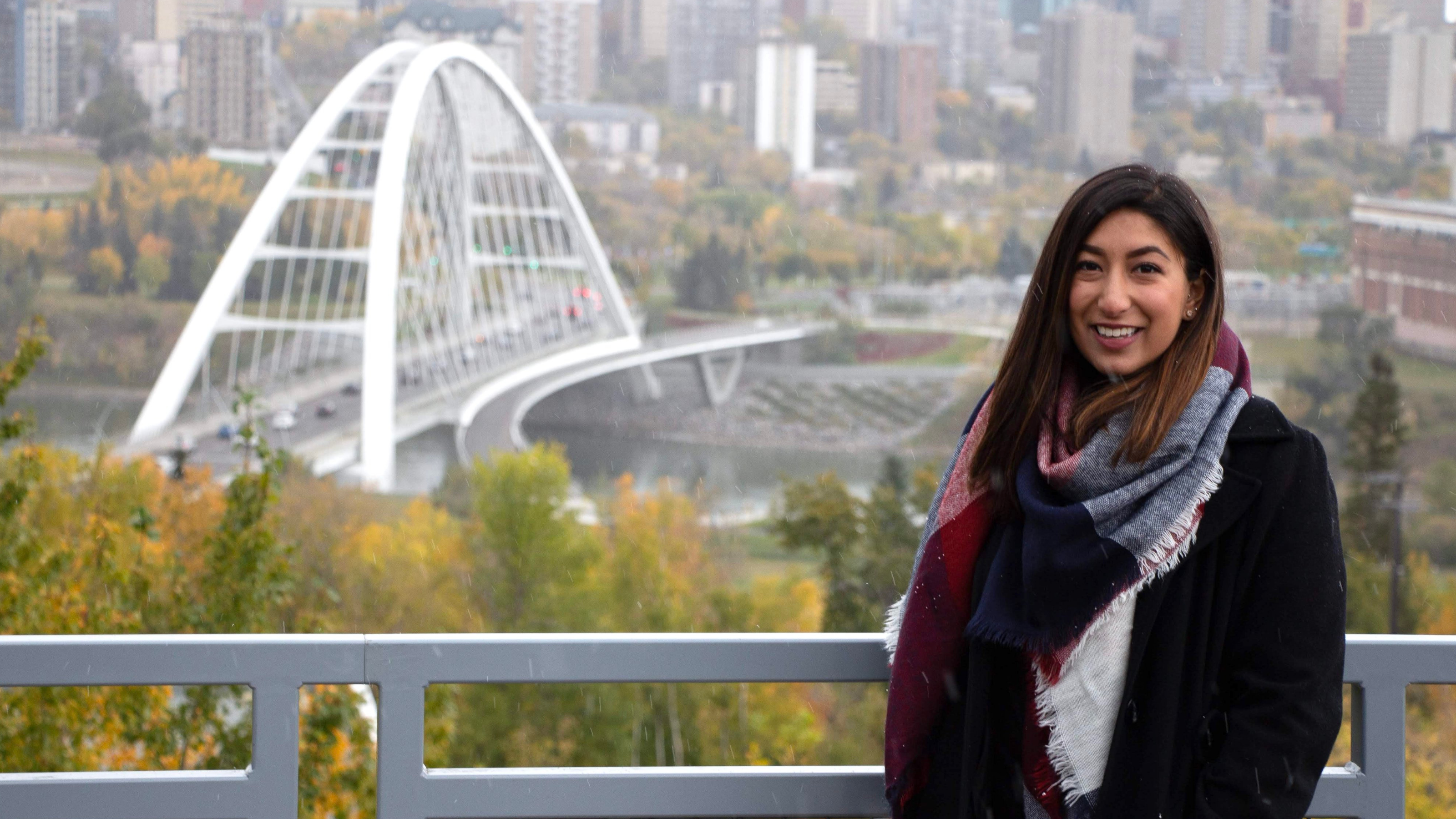What does innovation mean to you?
To me, innovation is the ability to solve a problem by taking information that is available to everyone and restructuring it in a way that allows us to see solutions. I think every innovator has a very creative brain that can see things that others can’t necessarily see.
How do you describe your work to people who don’t work in your field?
I work on figuring out what makes a pancreatic β-cell a good β-cell so I can figure out how we can create better stem-cell derived β-cells (SCβ-cells) for those with type 1 diabetes. I assess the function of these cells with a technique called patch clamp, which tells us information about the electrical function of the cells. Then I look into what genes are necessary to elicit that function using single-cell RNA sequencing. After this, I would like to implement machine learning to help me see complex patterns that I am unable to see by number crunching and spreadsheets.
I see that your work in diabetes has also manifested in your creative work! How did this come about?
I have always enjoyed art and science since I was very young. It was a really great coping tool for me when I was diagnosed with type 1 diabetes at the age of 11. I would often paint my insulin pump or insulin pens to help me feel confident because it could be very isolating. Recently, I lost the ability to sense my low blood sugars and needed a way to self-fund a technology called a continuous glucose monitor, that is when I again turned to art to help me. My artwork has helped me manage my condition by allowing me to afford this life-saving technology which is currently not covered by insurance, and it is also a wonderful stress reliever for me. I also create products that others with type 1 diabetes can wear to help them feel confident and beautiful too!
What advice would you give to someone who has interests in both the sciences and the arts but is unsure how to balance this in their academic or professional lives?
I think it’s important to remember that everyone needs a break from their professional life at some point. If we work too hard at one thing it can actually make us less productive in the long run! So if you enjoy other hobbies make sure to carve out a few hours each week and dedicate time to exploring it. It can be a great way to rejuvenate and get out of academic ruts!
What’s one big problem you want to solve through your work?
Currently, the differentiation of stem-cell derived β-cells (SCβ-cells) produces cells that appear to be immature. Key properties of mature insulin-producing β-cells include electrical excitability (similar to neurons in the brain) and the regulated release of insulin by a process called exocytosis. SCβ-cells fail to display appropriately regulated insulin release, but little is known about why exactly this occurs. I want to understand why this is the case in these cells, and what genes are required to produce mature functioning cells to find the perfect protocol to create SCβ-cells.
How do you balance your work with your other studies, personal life and self care?
My day planner is my best friend. I try to schedule everything out on Sunday night to make sure I can have a great week ahead. This includes tasks I need to complete for my studies, my art business as well as my self care activities (working out or spending time with friends). I also like to block out some time on Sundays to do a “task list clean up”. Living with diabetes can sometimes get in the way of weekly tasks, so that time can ensure you get it all done regardless of what life throws at you!
What do you think are the biggest issues facing young innovators right now?
One issue that plagues me is perfectionism, and I know that many other young people also struggle with perfectionism in their lives. I am working on getting better but sometimes I need to remind myself often that first drafts are supposed to be bad!
Shout out your work! What do you have coming up in your future?
Well I am always creating new things for clients and those in the diabetes community through my instagram account @artinfusion97! I never really know what’s coming up in the future but I always make sure to document it. Give me a follow!
This interview was edited for length and clarity.
Innovator Spotlight is a series that introduces you to students whose big ideas are making a big difference.
Do you know someone who’s breaking boundaries at the U of A? (Maybe it’s you!) We’re interested in hearing from students who are creating new solutions to make our world better, no matter their discipline or year of study.
Get in touch at youblog@ualberta.ca.

About Jasmine
Jasmine completed her Bachelor of Science in pharmacology in 2019 at the University of Alberta. She is now a graduate student researching stem-cell derived b-cell therapy for Type 1 diabetes, in Dr. Patrick MacDonald’s lab in the Department of Pharmacology. Jasmine ́s interest in this field stems from her own personal challenges with type 1 diabetes for 12 years. She recently built her own artificial pancreas using the open sourced loop project built by others with type 1 diabetes and is now working on understanding the biophysical properties and gene expression of SCβ-cells to propel cell-based treatments. Jasmine is currently using the Patch-seq platform developed by MacDonald lab to link the electrophysiological properties (Patch) with single cell RNA sequencing (Seq) to find gene markers and transcriptional changes that lead to cells that are more mature. She will also be applying Machine Learning to predict the functionality of cells based on the transcriptomic profiles.
